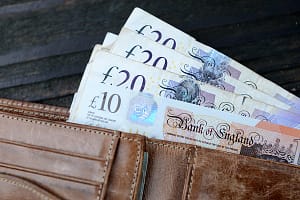Like the United States, the United Kingdom also sees significant increases in money borrowing among its citizens. Because a surge in a particular loan type tells a different story than a surge in another, we present in this review three loan types and how the UK stands in each.
Student loans
The research briefings provided by the UK Parliament itself show that student debt stands at £105 billion by the end of March 2018. In part, this tells a story of how expensive it has become to get a college education in the UK. Fortunately, students can expect good payoffs because statistics show a relatively advantageous future for them when they leave the university.
The Guardian reports that only 5% of the graduates remain unemployed six months after graduating. In addition to that, 74% of professionals who enter the workforce are full-time first degree graduates. In terms of the pay that they get, males more than females tend to benefit from getting a degree. The men’s average pay rise to £24000.
Car finance loans
A September 2017 report posted by The Guardian says that auto debt figures for 2016 are approximately double the value recorded in 2011. The main reason for this could be the ease with which car loans are transacted today.
“Seemingly cheap financing deals offer the opportunity to drive away a brand new car less than two weeks from signing on the dotted line. There can be little or no deposit, while monthly payments from as little as £100 can stretch the bill over a two- to four-year period,” part of the report read.
Mortgages
Since 2014, the mortgage debt has been steadily increasing. In 2017, it is estimated to be more than £1.33 trillion. One of the reasons for this surge is the encouragement that the citizens get from their government. After the banking crash in the first decade of the 21st century, the UK government launched the Help to Buy scheme, which subsidized the deposits of first-time home buyers. Critics say that the scheme pushed people who otherwise won’t even consider buying a home to be in debt.
Unsecured loans
The Guardian reports that by the end of July 2017, unsecured credit had risen to a level not seen since September 2010. Specifically, unsecured debt has reached £201.5 billion. Many say that the failure of the government to meet economic targets and the uncertainty brought about by the Brexit vote contributed to the greater propensity of people to get unsecured debt.
What are examples of unsecured credit? A logbook loan is a good example. In this type of transaction, a borrower loans money against their car. They surrender the car’s logbook upon the securement of the loan. At that moment, the lender technically becomes the owner of the vehicle. The borrower continues to use the car just as long as they are able to keep up with the repayments, which can have interest rates of up to 70%. This type of loan is so common because logbook loans work for most vehicles.
A payday loan is also another example of an unsecured credit. In this type of transaction, a borrower gets money from a lender on the condition that they (the borrower) repays upon getting their paycheck. A report says that three of every four people get more than one payday loan in a year. The report also shows that those who avail themselves of payday loan are the younger ones, particularly those who fall within the 25-30 range.






Leave a Comment